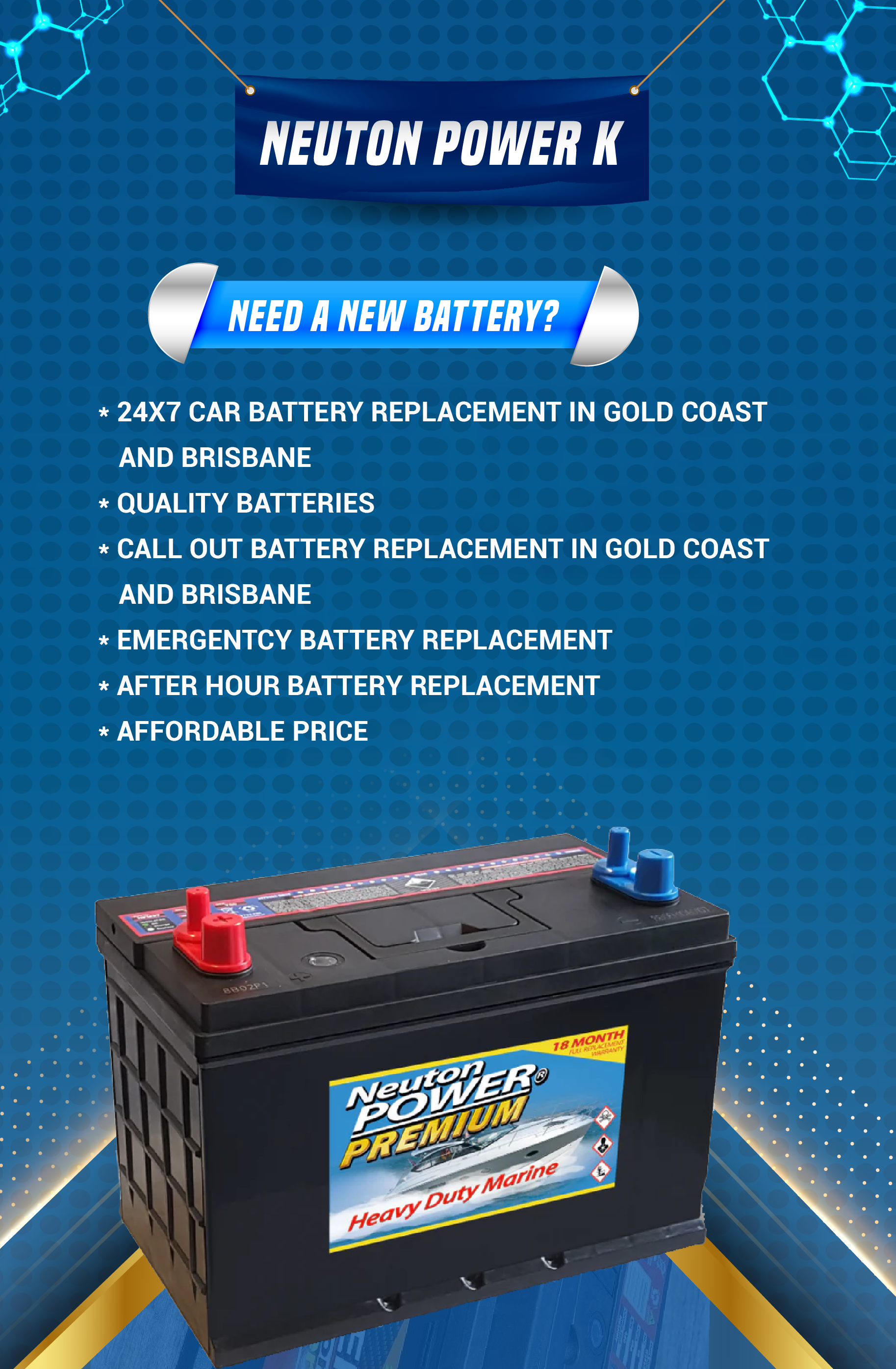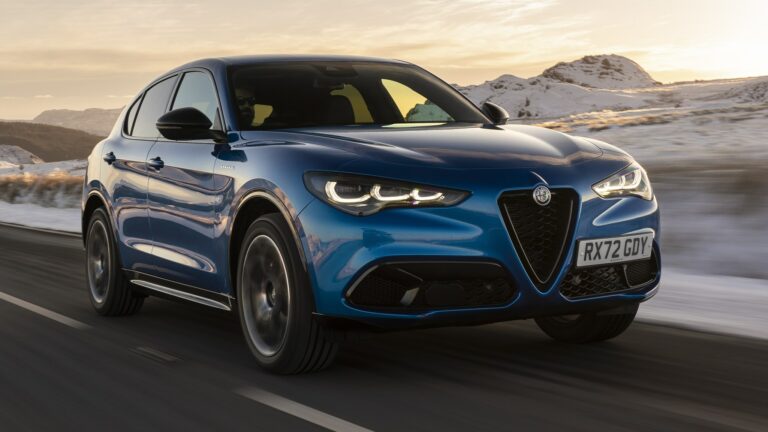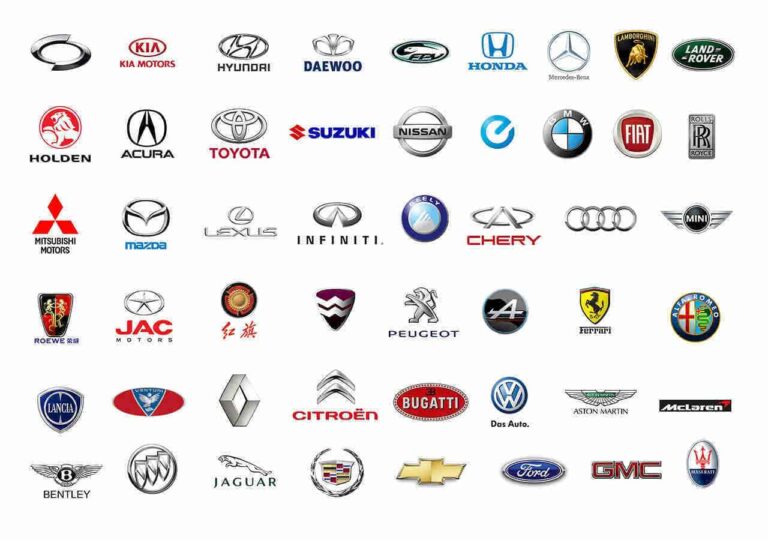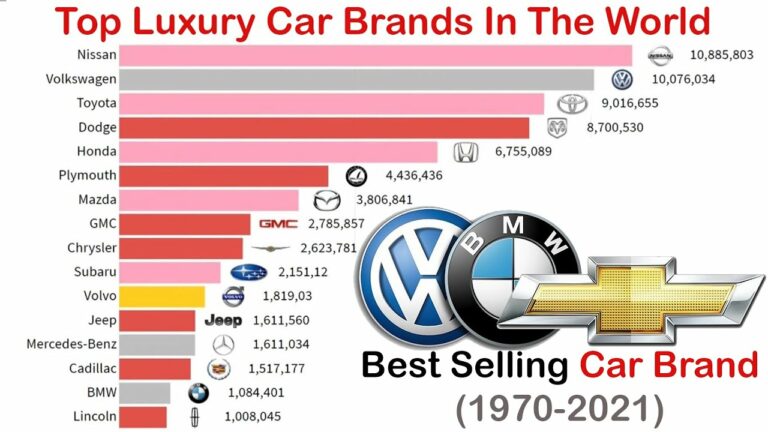How Much Is A Brand New Car Battery? Unpacking the Costs and Considerations
How Much Is A Brand New Car Battery? Unpacking the Costs and Considerations cars.truckstrend.com
The rhythmic hum of a well-running engine, the crisp ignition on a chilly morning – these are sounds of a car battery doing its job. Often overlooked until it fails, the humble car battery is the unsung hero that powers your vehicle’s starting system, lights, and various electronic components. But when that dreaded click-click-click replaces the robust roar of your engine, the immediate question that pops into mind is: "How much is a brand new car battery?"
The answer, unfortunately, isn’t a simple fixed number. The cost of a new car battery can vary significantly, ranging from under $100 to well over $300, and sometimes even more for specialized applications. This comprehensive guide will delve into the factors influencing these prices, explore different battery types, provide practical advice on purchasing and installation, and equip you with the knowledge to make an informed decision when it’s time to power up your ride again. Understanding these nuances is crucial, as choosing the right battery isn’t just about the upfront cost, but also about reliability, longevity, and optimal performance for your specific vehicle.
How Much Is A Brand New Car Battery? Unpacking the Costs and Considerations
The Price Tag: A Range, Not a Fixed Number
Generally, a brand new car battery for a standard internal combustion engine (ICE) vehicle typically falls within the $100 to $250 range. However, this is a broad spectrum, and certain factors can push the price lower or significantly higher. For vehicles with advanced start-stop technology, high electrical demands, or premium brands, you could easily see prices climbing to $250-$400 or more.
Let’s break down what contributes to this variability.
Understanding Battery Types and Their Impact on Cost
Not all car batteries are created equal. Different types of batteries are designed to meet varying power demands, environmental conditions, and vehicle technologies. Each type comes with its own price point:
-
Standard Lead-Acid (SLI/Flooded) Batteries:

- Description: These are the most common and traditional car batteries. They contain a liquid electrolyte solution (sulfuric acid and water) that covers lead plates. They are designed primarily for Starting, Lighting, and Ignition (SLI) functions.
- Cost: Generally the most affordable option, typically ranging from $80 to $150.
- Pros: Inexpensive, widely available, reliable for basic vehicle needs.
- Cons: Require occasional maintenance (checking electrolyte levels in some designs), can be prone to corrosion, less tolerant to deep discharges, not ideal for modern vehicles with high electrical loads or start-stop systems.

-
Absorbed Glass Mat (AGM) Batteries:
- Description: In AGM batteries, the electrolyte is absorbed into fiberglass mats that are sandwiched between the lead plates. This design makes them "maintenance-free" and spill-proof. They offer superior performance, especially in vehicles with high electrical demands or start-stop systems.
- Cost: Significantly more expensive than standard lead-acid, typically ranging from $180 to $350.
- Pros: Longer lifespan, faster charging, better cold-weather performance, more vibration resistant, spill-proof, excellent for vehicles with start-stop technology or numerous electronic accessories.
- Cons: Higher upfront cost, sensitive to overcharging (require specific chargers if maintaining at home).

-
Enhanced Flooded Batteries (EFB):
- Description: EFB batteries are an improved version of standard flooded batteries, designed as a more cost-effective alternative to AGMs for vehicles with basic start-stop systems or higher electrical loads. They feature thicker plates and special additives to improve charge acceptance and cycling capability.
- Cost: Priced between standard flooded and AGM batteries, usually from $150 to $250.
- Pros: Better performance than standard flooded batteries for mild start-stop systems, more durable for urban driving, more affordable than AGMs.
- Cons: Not as robust as AGMs for extreme start-stop demands or very high electrical loads, still a flooded design (though often maintenance-free).
-
12V Batteries for Hybrid and Electric Vehicles (EVs):
- Description: While hybrids and EVs have large, expensive traction batteries (which power the motor), they also contain a smaller 12V battery. This 12V battery is typically a lead-acid or sometimes a small lithium-ion battery, used to power the vehicle’s accessory systems (lights, radio, power windows) and to "boot up" the high-voltage system.
- Cost: Can vary widely. Standard lead-acid 12V batteries for these vehicles might be similar to conventional cars ($100-$250), but specialized designs or small lithium-ion 12V batteries can push prices to $300-$600+.
- Note: This is not the main propulsion battery, which can cost thousands.
Key Factors Influencing Car Battery Prices
Beyond the battery type, several other variables play a significant role in determining the final cost:
- Brand and Quality: Premium brands like Optima, Bosch, and Odyssey often cost more but may offer superior performance, longer warranties, and advanced technology. Budget brands might save you money upfront but could compromise on longevity or reliability.
- Cold Cranking Amps (CCA) and Reserve Capacity (RC):
- CCA: This rating indicates the battery’s ability to start an engine in cold temperatures. A higher CCA rating means more power, which is crucial in colder climates, and generally translates to a higher price.
- RC: Reserve Capacity measures how long a fully charged battery can power essential accessories if the alternator fails. A higher RC is beneficial but also adds to the cost.
- Battery Group Size: Batteries come in various physical sizes and terminal configurations (group numbers, e.g., Group 24, Group 35, Group 65). Your vehicle’s manufacturer specifies the correct group size. Larger or less common group sizes can be more expensive.
- Warranty: Batteries with longer warranties (e.g., 3-5 years full replacement) typically have a higher initial price compared to those with shorter warranties (e.g., 1-2 years). A longer warranty often reflects the manufacturer’s confidence in the product’s lifespan.
- Core Charge: Almost every new car battery purchase includes a "core charge" (typically $10-$20). This is a refundable deposit that encourages you to return your old battery for recycling. When you return your old battery, this charge is refunded.
- Location and Retailer: Prices can vary based on your geographical location (due to shipping costs, local taxes, and market demand). Different retailers (auto parts stores, big box stores, dealerships) also have varying pricing strategies and markups.
- Installation Costs: If you’re not replacing the battery yourself, you’ll need to factor in labor costs. This can range from $20-$100, depending on the complexity of the installation and the service center. Some retailers offer free installation with purchase.
Where to Purchase Your New Car Battery
You have several options when it comes to buying a new car battery, each with its pros and cons regarding price, convenience, and service:
- Auto Parts Stores (AutoZone, Advance Auto Parts, O’Reilly Auto Parts, Pep Boys):
- Pros: Wide selection, competitive pricing, often offer free battery testing and installation with purchase, good warranty policies, convenient locations.
- Cons: Can be overwhelming with choices, staff expertise varies.
- Big Box Retailers (Walmart, Costco, Sam’s Club):
- Pros: Very competitive prices, especially for store brands, convenient for existing members/shoppers.
- Cons: Limited selection, installation services may not be available or as comprehensive, customer service can be less specialized.
- Dealerships:
- Pros: Guaranteed correct battery for your specific make/model, often genuine OEM (Original Equipment Manufacturer) parts, expert technicians for installation.
- Cons: Typically the most expensive option, can have higher labor costs.
- Independent Mechanics/Service Centers:
- Pros: Convenient if your car is already there for service, trusted advice, professional installation.
- Cons: Prices may be marked up, selection might be limited to what they stock or can order.
- Online Retailers (Amazon, eBay, dedicated battery websites):
- Pros: Potentially lower prices, vast selection, direct shipping.
- Cons: Shipping heavy batteries can be expensive, no immediate installation service, returning old core can be a hassle/costly, no hands-on inspection before buying.
DIY Installation vs. Professional Service: Weighing the Costs and Benefits
Once you’ve purchased a new battery, you have to decide who will install it.
- DIY Installation:
- Cost Savings: You save on labor fees, which can be $20-$100.
- Pros: Immediate gratification, learning experience.
- Cons: Requires basic tools (wrench, battery terminal cleaner), knowledge of proper safety procedures (disconnecting terminals correctly to avoid shorts, handling corrosive acid), risk of damaging vehicle electronics if not done properly. Modern vehicles, especially those with start-stop, often require battery registration/programming after replacement, which DIY cannot do without specialized tools.
- Professional Installation:
- Cost: Adds labor fees (though some retailers offer free installation).
- Pros: Convenience, expertise, proper disposal of the old battery, ensures correct fitment and terminal connection, peace of mind, professional tools for testing and (if needed) battery registration.
- Cons: Added cost, might require scheduling an appointment.
For most standard vehicles, DIY installation is straightforward. However, for vehicles with complex battery locations (e.g., under the back seat or in the trunk), or those with start-stop technology requiring battery registration, professional installation is highly recommended.
Signs You Need a New Battery (and Why It’s Worth the Cost)
Understanding the cost of a new battery is often prompted by the signs of a failing one. These include:
- Slow Engine Crank: The engine turns over sluggishly when you try to start it.
- Dim Headlights or Interior Lights: Especially when the engine is off or cranking.
- Battery Warning Light: An illuminated battery icon on your dashboard.
- Corrosion on Battery Terminals: A white, powdery substance indicates a leak or off-gassing.
- Bloated or Swollen Battery Case: A sign of internal damage or overcharging.
- Old Age: Most batteries last 3-5 years; beyond that, failure is more likely.
Replacing a dying battery proactively prevents being stranded and saves you the hassle and potential cost of a tow. It’s a critical maintenance item that ensures your vehicle’s reliability.
Tips for Smart Battery Shopping
- Check Your Owner’s Manual: Always start here to find the recommended battery group size, CCA, and RC ratings for your specific vehicle.
- Compare Specifications, Not Just Price: A cheaper battery with insufficient CCA for your climate or vehicle demands will be a false economy.
- Read Reviews: Look for reviews on specific battery models and brands to gauge reliability and customer satisfaction.
- Understand the Warranty: A longer warranty usually indicates a more durable battery. Know what the warranty covers (full replacement vs. pro-rated) and for how long.
- Factor in the Core Charge: Remember you get this back if you return your old battery.
- Consider Your Climate: If you live in an extremely cold climate, prioritize a battery with a higher CCA rating. In hot climates, look for batteries designed for heat resistance.
Comprehensive Car Battery Price Table
Below is a general price guide for brand new 12V car batteries, along with key features and typical lifespans. Prices are approximate and can vary based on brand, CCA rating, and retailer.
| Battery Type | Price Range (USD) | Key Features / Benefits | Typical Lifespan |
|---|---|---|---|
| Standard Flooded (SLI) | $80 – $150 | Most affordable, widely available, suitable for basic vehicle needs. | 3 – 5 years |
| Enhanced Flooded (EFB) | $150 – $250 | Improved performance over standard flooded, better for mild start-stop vehicles. | 4 – 6 years |
| Absorbed Glass Mat (AGM) | $180 – $350 | Superior performance, longer life, vibration resistant, spill-proof, ideal for start-stop & high electrical demands. | 5 – 8 years |
| 12V Hybrid/EV (Specialized) | $100 – $600+ | Specific fitment for hybrid/EV auxiliary systems. Can be lead-acid or small Li-Ion. | 3 – 7 years |
(Prices do not include core charge or installation fees, which may apply.)
Frequently Asked Questions (FAQ)
Q: How long do car batteries typically last?
A: On average, a car battery lasts between 3 to 5 years. Extreme temperatures (both hot and cold), frequent short trips, and excessive accessory use can shorten its lifespan.
Q: Can I replace my car battery myself?
A: Yes, for many standard vehicles, replacing the battery yourself is a relatively straightforward DIY task. However, for vehicles with complex battery locations or those with start-stop technology that require battery registration, professional installation is recommended.
Q: What is a core charge and do I get it back?
A: A core charge is a refundable deposit (typically $10-$20) added to the price of a new battery. You get this money back when you return your old battery for recycling. It’s designed to encourage proper disposal.
Q: Is a more expensive car battery always better?
A: Not necessarily "always," but a higher price often correlates with better quality, more advanced technology (like AGM), higher CCA/RC ratings, and a longer warranty. It’s about finding the right balance between cost and what your vehicle truly needs.
Q: How do I know what size battery my car needs?
A: The best way is to consult your vehicle’s owner’s manual. It will specify the correct "group size" (e.g., Group 35, Group 65) and recommended CCA rating. Auto parts store websites also have online tools where you can input your car’s make, model, and year to find compatible batteries.
Q: What’s the difference between CCA and RC?
A:
- CCA (Cold Cranking Amps): This measures the battery’s ability to deliver current to start an engine in cold temperatures. A higher CCA is better for cold climates.
- RC (Reserve Capacity): This measures how long a fully charged battery can power essential accessories (like headlights) if the alternator fails. A higher RC means you have more time before your battery dies completely.
Conclusion
The question "How much is a brand new car battery?" reveals a dynamic pricing landscape influenced by battery type, brand, performance specifications, and the point of purchase. While a basic flooded lead-acid battery might cost you around $100, a high-performance AGM battery for a modern vehicle could easily be $300 or more.
Understanding these factors empowers you to make an informed decision, ensuring you select a battery that not only fits your budget but also meets your vehicle’s specific requirements and provides reliable starting power for years to come. View your new car battery not just as an expense, but as a critical investment in your vehicle’s reliability and your peace of mind on the road.





